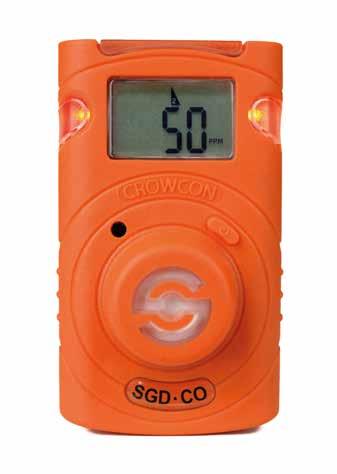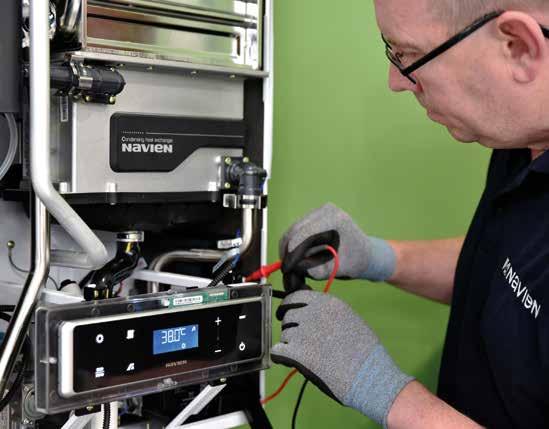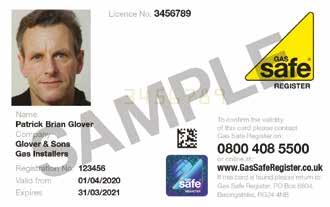
5 minute read
Industry Standard Update 105
Liquid Gas UK CoP 22 – 2020 Amendment 1 Date issued: 16 December 2021
This Industry Standard Update (ISU) provides an overview of the key areas of change arising from the revision of Liquid Gas UK Code of Practice 22 – 2020 Design, Installation and Testing of LPG Piping Systems.
Introduction
During December 2021, Liquid Gas UK published a revision to Code of Practice 22(1). Code of Practice 22 Amendment 1(2) supersedes the previous version, which is now obsolete.
The revision to this standard comes into effect immediately.
To allow registered businesses time to carry out internal update training to reflect the technical requirements of the amended standard, Gas Safe Register will inspect to the new requirements of this standard from 1 May 2022. However, this should not restrict businesses from applying the specification sooner.
The following is a brief overview of the amendments made.
General
Amendments and corrections have been made throughout the document and improvements have been made to Appendix ‘I’.
Section 2: System design
Bullet point 2 of Clause 2.3.2 has been revised to state that the design temperature for aboveground pipework shall not be less than 50°C.
Section 6: Hose and hose assemblies
The third bullet point of Clause 6.4.1 includes guidance that stainless steel hoses/flexible assemblies shall be BS EN ISO 10380(3) .
The Note for Clause 6.4.2.1 includes reference to Liquid Gas UK Code of Practice 32(4) .
Section 7: Pre-service; inspections, testing and commissioning
Clause 7.3.3 has been revised to state that LPG vapour is only permitted as the test medium for new: • Service pipework with a nominal operating pressure of 75mbar or less, and where the volume does not exceed 0.035m3 • Liquid and vapour pressure pipework where the volume does not exceed 0.01m3 • Where the pipework has already been strength and tightness tested on air.
Clause 7.4.1 provides guidance on the capabilities and perceptible movement of fluid gauges.
Clause 7.5.2 states that strength testing is required after installation on: • PE pipework • Brazed and soldered metallic pipework • Pipework assemblies that have not been strength tested at manufacture.
Appendix G.1.3: Table G1
Table G1 provides guidance on domestic appliance working pressures. Note A for Table G1 states: The person commissioning the installation shall ensure the regulator locks up at a pressure not exceeding the values given, with no flow passing through the installation. Lock up pressure shall be determined after completion of the tightness test procedure and commissioning of appliances, where each has been turned off and after the appropriate settlement time. Lock-up pressures above these maximum values usually indicate a faulty regulator, which should be replaced.
Appendix G.2
Clauses G.2.1, G.2.2, G.2.3, G.2.4 and G.2.5 have been included in Appendix G.2 and provide guidance on recommended regulator working pressures.
Appendix I: Gas tightness testing of LPG pipework
Clause I.1.3 includes a fourth bullet point to make reference to Test D for external pipework with a volume not exceeding 0.035m3 (service pipework) and 0.01m3 for pipework operating at vapour pressure.
Clause I.1.4 states: An upstream valve let-by test is required whenever a tightness test is carried out downstream of an isolation valve which has air or gas at a pressure greater than the test pressure upstream. For systems operating at <_75mbar, the downstream pressure should be reduced to between 7 and 10mbar. For systems operating at >75mbar, the downstream pressure should be reduced to approximately 50 per cent of the upstream nominal operating pressure.
Clause I.1.7 states that nominal operating pressure is limited by the initial strength test. If pipework is suitable for uprating to a higher operating pressure, it shall always be strength tested or be strength tested at an appropriate pressure as if it were a new installation. Table 8 provides further guidance.
Table I.1 has been amended to include guidance for gauge resolution.
The Notes applicable to Table I.2 in Appendix I.3 have been revised: • TTD shall be rounded up to the next full minute and shall not be less than 2 minutes. • Testing new service pipework with propane is only permitted for external pipework with a nominal operating pressure of 75mbar or less and where the volume does not exceed 0.035m3 • Testing new liquid or vapour pressure pipework with LPG vapour is only permitted where the volume does not exceed 0.01m3 • Testing commercial vapour pressure installation pipework is only permitted using air or nitrogen • Consideration should be given to adding an additional 10 per cent to the installation volume for fittings.
Table I.4, Test pressures for new pipework, and associated Notes 1 and 2 have been revised to provide guidance on new LPG service pipework.
Additional guidance for let-by testing and service pipework has been included in the revised Table I.5.
The following tables have been revised to make reference to Clause I.1.4. • Tables I.6, Tightness Test
Duration (TTD) for new propane
PE service pipework/stabilisation • Tables I.7, Tightness Test
Duration (TTD) for existing propane PE service pipework/ stabilisation • Tables I.8, Tightness Test
Duration (TTD) for new steel and copper propane pipework/ stabilisation • Table I.9, Tightness Test Duration (TTD) for existing steel and
copper propane pipework • Table I.10, Stabilisation and
Tightness test Duration (TTD) for new propane pipework over 0.035m3 by total volume has been included in this revision, and subsequent Clauses and
Tables have been renumbered. • Figures I.11.1, I.11.2 and I.11.3 have been revised to reflect the amendments to Appendix I. • Figure I.11.4 Test D – Chart for
Test pressures and times for service pipework <_0.035m3 volume and <_0.01m3 for pipework operating at vessel vapour pressure. n
Access to Industry Standards from Gas Safe Register
This Standard is included in the list of current Industry Standards available on a subscription basis to the majority of Gas Safe registered business. To subscribe, log into your online account at www. gassaferegister.co.uk/sign-in and choose Standards Subscriptions. Choose and pay for a one-year or three-year subscription and then you will be able to access the Normative Documents.
Summary As previously stated, this Industry Standard Update is only a brief overview of the information contained in the amended standard. Registered businesses should be aware that they have a responsibility to ensure that they are fully apprised of all the requirements of the whole published standard and its practical application.
Bibliography 1. Liquid Gas UK Code of Practice
22 – 2020 Design, Installation and Testing of LPG Piping Systems.
2. Liquid Gas UK Code of Practice
22 – 2020 Design, Installation and Testing of LPG Piping Systems – Amendment 1. This supersedes the previous edition
3. BS EN ISO 10380: 2012 Pipework
– Corrugated metal hoses and hose assemblies
4. Liquid Gas UK Code of Practice
32 – LPG systems in Leisure Accommodation Vehicles and Road Vehicles with Habitation – Post Delivery Inspection, Commissioning and Maintenance








